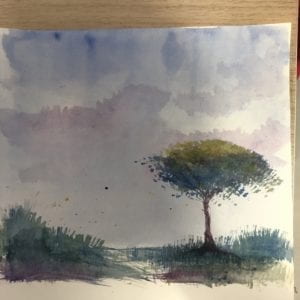For our assignment for finding a “good” design, I decided to paint something that adheres to the traditional principles of composition. For photography, painting and any medium of art that requires some level of composition, the rule of thirds is one of the fundamental components to beginning composition. The rule essentially requires the composer to split the canvas into thirds, both horizontally and vertically. Where these lines intersect and lay on the canvas are guidelines to where your eye will naturally fall on, making it more visually digestible. Additionally, I started incorporating watercolor into this painting due to its expressive and colorful nature, that I feel represents aesthetically pleasing or “good” design.
